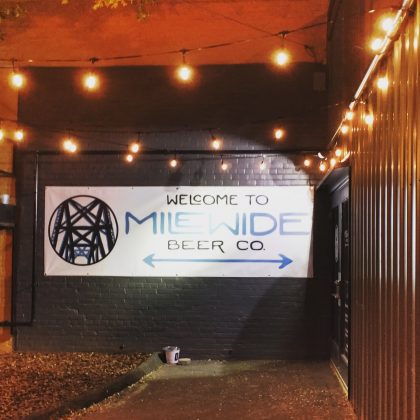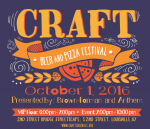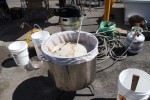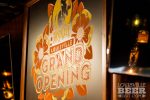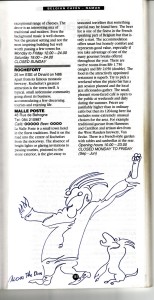In my view, the “craft” modifier for better beer has outlived its usefulness, at least without earnest industry-wide introspection as to what the practice of “craft” might actually mean if/when practiced.
Until then, I’ll begin with an anecdote. If my luck holds, I may end with it.
—
In October of 1995, when the Public House was only three years old, I departed the comfortable confines for a ten-day beer tour of European beer destinations, including Dusseldorf, Cologne and Belgium. There also was a brief two-day side trip by train to Copenhagen to visit my friends there. Accompanying me was David Pierce, John Dennis and Ron Downer.
Much beer was consumed.
Our first great thrill was stumbling into Dusseldorf on “Sticke” day, when the brewpub Zum Uerige rolls out a special, beefier version of its elegant everyday ale. Sticke happens only at random intervals, and we felt fortunate to experience such goodness accidentally, in the primeval absence of social media to guide the proceedings.
These days, everyone would know; serendipity has been outlawed, and that’s too bad.
The next morning, we set out for Belgium, allowing for a few hours of fast-paced Kölsch consumption in Cologne. A change of trains was necessary at Liege, and so we made for the station buffet to have an inaugural beer. There were 35 choices on the menu, which by Belgian standards were rather elemental, albeit ones that spanned the gamut of the brewer’s art.
At the time, I wrote:
“In America, you also have a choice: Bud or Bud Light. That is, if you can find a train station.”
Namur, located in the Meuse river valley in southeastern Belgium, was the ultimate target. It is a clean and scenic city with an old citadel perched on a hill, and our first move after settling into our lodgings was to consult Tim Webb’s seminal “Good Beer Guide to Belgium and Holland” (nowadays, just Belgium) for the address of L’Eblouissant (The Dazzling), a beer café featured in the Namur section, and highly praised by the author. It was the reason we chose Namur to visit.
Equipped with a sketchy city map and directional gestures from the desk clerk, we began walking. Upon arrival, it became evident that although a drinking establishment was doing business there, it was not The Dazzling. Because the friendly bartender was kind enough to explain the situation and to give us directions to the café’s new location across town, we had a round of Duvels prior to resuming the hike.
Even then, we almost missed The Dazzling. There was no sign apart from a backlit Murphy’s Stout oval, adorning an accurate facsimile of an Irish pub front. We stepped inside, only to find the pub officially closed to make room for two dozen Namur locals gathered to celebrate their recent return from a tour of Sri Lanka.
At this juncture, our first acquaintance was made with the Belgo-Irish force of nature known as Alain “Moss the Boss” Mossiat. Moss welcomed us, a bit warily at first. His resistance began to crumble when it became evident that our beer pilgrim credentials were exemplary, and so an impromptu compromise was reached: He’d be very busy with the group, but we could occupy an improvised table in the storage area. He’d serve us when he could, and there was enough Spaghetti Bolognese on hand for us to have some dinner, too.
Moss proceeded to both cook and serve food and beers to the thirty of us, operating from a closet kitchen with an ordinary home stove, and with a 12-year-old son positioned atop a beer crate behind the bar, pouring nitro Murphy’s all night long for the native revelers.
The stout was Moss’s nod to his Irish side, and besides, no other bar in Namur had such a beer in 1995. However, cash flow aside, Moss’s pride and joy was a comprehensive list of bottled ales from the Wallonia region, which he viewed as poorly represented on famous beer lists elsewhere in Belgium.
After making our first selection ourselves, we asked Moss to choose for us during the remainder of the evening, and one after another, 750 ml bottles of Wallonian ale appeared before us. The pinnacle was an aged, homebrewed mead from his personal (literal) cellar, which quite simply was the best I’d ever had, and may yet be.
Perhaps I kept track of what we were drinking, but I doubt it. What I remember is a magical evening in an eclectic setting, seated amid random junk, cases of bottles and various beer placards and advertisements (oddly, not unlike my home base), learning that for all of Belgium’s culinary splendor, the one dish you’re likely to find on the menu at a beer café with “snacks” is spaghetti, an ambience sans television or music, with our quartet lapsing eventually into a philosophical debate.
In my 1995 description:
(As we sampled) and finished eating our spaghetti, a spirited argument ensued as to the true nature of craft-brewed beer in America, with Alain interrupting occasionally to explain the next selection. Expatriates abroad. Drinking, talking. Very cool.
—
My first thought about this in 2014 is this: Damn, we were referring to better beer as “craft” even then, 20 years ago?
What exactly was being said about “craft” as we drank ales and mead in Namur?
My recollection is hazy, but one general theme was whether Sam Adams genuinely could be regarded as “craft” when so many other emerging microbreweries produced a fraction of the volume, and without contract brewing accounting for so much of the barrelage. How could small and large alike occupy the same boat?
As they say, the more things change …
There is much more to say about craft, crafty and the sheer grandeur of variable semantics. These can wait for another column.
Thinking back on it, Moss’s strident advocacy of local and regional Wallonian specialties may have planted quite the seed somewhere in my noggin. It would not have been possible to return to the Public House in 1995 and adapt it in such a fashion, but it would be entirely possible now, and an all-Indiana and Kentucky beer format might be quite the marketing corker amid the general in-crowd saturation, appealing to an under-served segment of the better beer crowd for whom localism actually matters.
That said, Moss left the pub business in 1998, relocating with his family to County Mayo in Ireland to operate an organic farm. If memory serves, he’s been back in Belgium for a while, and probably is a grandfather by now. It’s been a long time since we’ve communicated, and yet, perhaps predictably, he’s on Facebook. I’ve sent a friend request.
To recap:
In 1995, we had a discussion about “craft” at The Dazzling.
In 2014, “craft” strikes me as an outtake from The Shining.
I think there needs to be a full-scale reboot … if not a power boot. As we await this next revolution in thinking and drinking, here’s a self-portrait of Moss the Boss from the mid-1990s (thanks, David Pierce).

